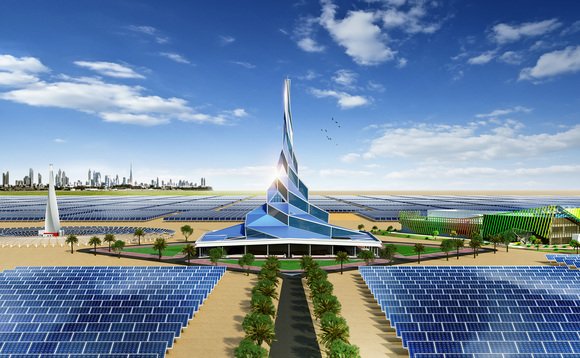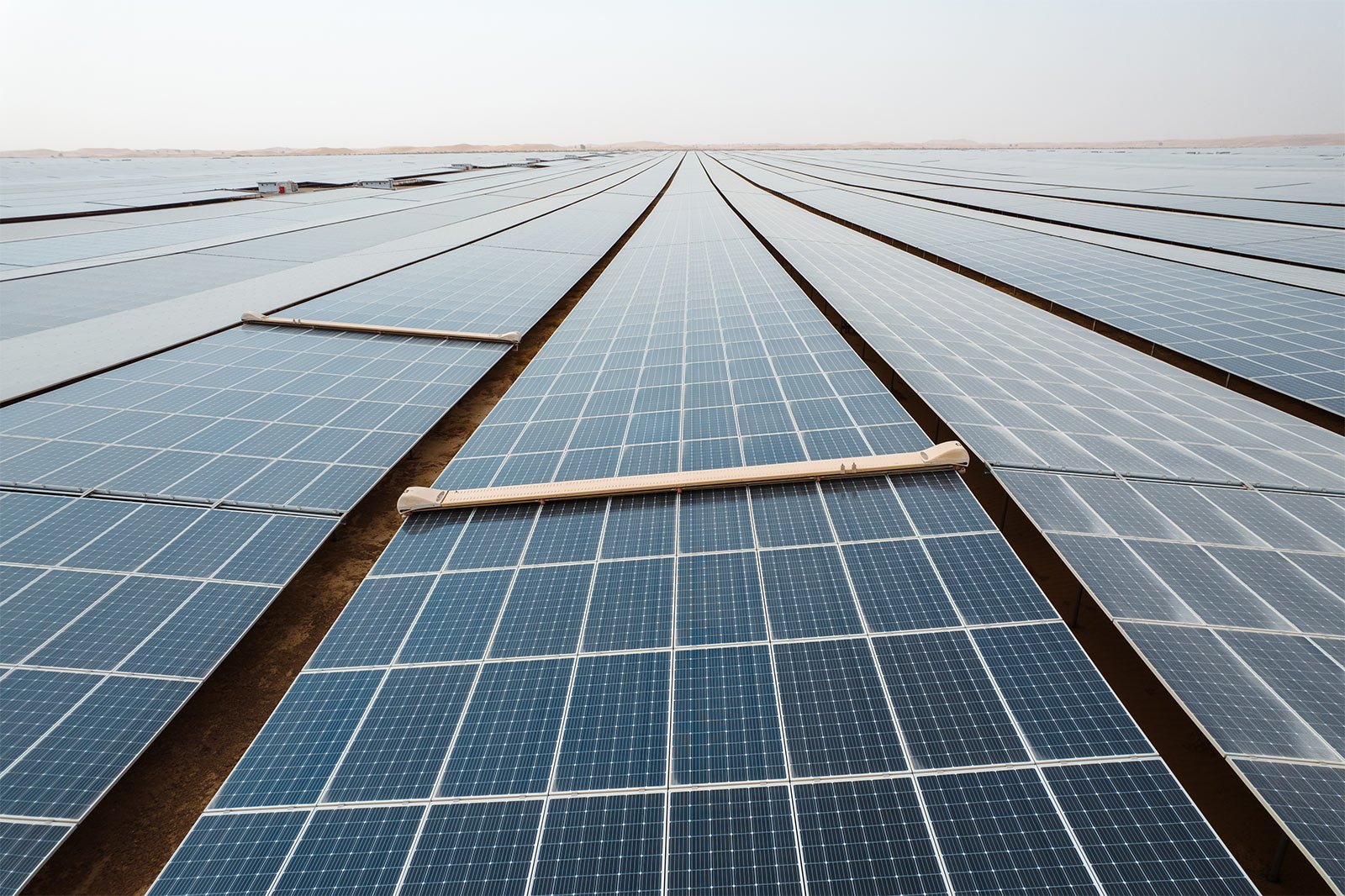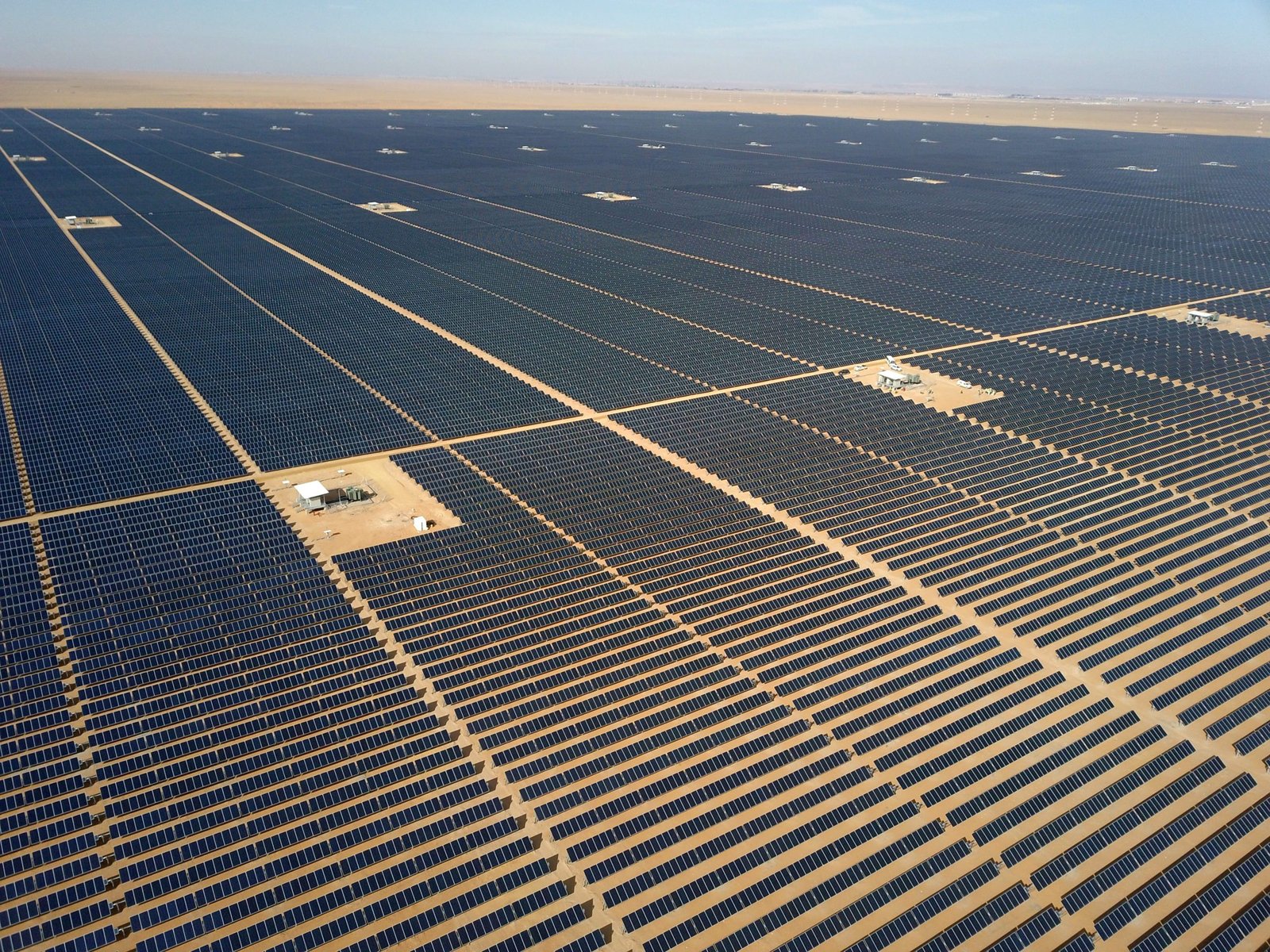The Gulf Cooperation Council (GCC) region has traditionally been known for its vast oil reserves, but in recent years, it has emerged as a global leader in solar power investments. Driven by economic diversification goals, sustainability initiatives, and decreasing solar energy costs, GCC nations are investing heavily in solar projects, research, and infrastructure. This transition is not only reshaping the region’s energy landscape but also driving job creation, technological innovation, and long-term economic stability.
This article examines the current state of solar power investments in the GCC, their economic and environmental impact, and how they are shaping the future of energy security and sustainability in the region.
1. Why GCC Countries are Investing in Solar Power
a) Economic Diversification and Vision Strategies
- Countries like Saudi Arabia (Vision 2030), UAE (Energy Strategy 2050), and Qatar (National Vision 2030) have committed to reducing dependency on oil by investing in renewable energy projects.
- The transition to solar energy is part of a broader effort to create sustainable economies and attract global investors.
b) Abundant Solar Resources
- The GCC has one of the highest solar irradiance levels in the world, making solar power a cost-effective and reliable energy source.
- By leveraging this natural advantage, GCC nations are able to generate low-cost electricity and improve energy security.
c) Falling Costs of Solar Energy
- The cost of solar energy has dropped by nearly 80% over the past decade, making it one of the cheapest sources of electricity.
- Large-scale investments in solar farms and grid modernization have contributed to reducing electricity production costs across the GCC.
d) Commitment to Sustainability and Carbon Reduction
- GCC nations are investing in solar power to meet international climate commitments and reduce carbon emissions.
- The shift towards renewable energy aligns with global sustainability goals, including the UN Sustainable Development Goals (SDGs).
2. Key Solar Power Projects in the GCC
a) Mohammed bin Rashid Al Maktoum Solar Park (UAE)
- Located in Dubai, this is one of the largest solar energy projects in the world, with a capacity of 5,000 MW by 2030.
- The project integrates photovoltaic (PV) and concentrated solar power (CSP) technologies, enabling 24/7 electricity production.
b) Noor Abu Dhabi Solar Plant (UAE)
- With a capacity of 1,177 MW, Noor Abu Dhabi is one of the world’s largest independent solar projects, powering 90,000 homes annually.
- The plant prevents the emission of 1 million metric tons of CO₂ per year, contributing to clean energy goals.
c) Sudair Solar Power Plant (Saudi Arabia)
- Part of Saudi Arabia’s National Renewable Energy Program, the Sudair plant is expected to generate 1,500 MW of solar power.
- The project supports Vision 2030’s target of achieving 50% renewable energy in Saudi Arabia’s electricity mix by 2030.
d) Al Dhafra Solar Project (UAE)
- Set to become the world’s largest single-site solar farm, producing 2,000 MW of electricity.
- This project features ultra-low-cost solar energy generation, demonstrating the UAE’s commitment to global leadership in renewable energy.
e) Sakaka Solar Power Plant (Saudi Arabia)
- The first utility-scale renewable energy project in Saudi Arabia, generating 300 MW of clean electricity.
- Sakaka is the blueprint for future solar investments, encouraging more public-private partnerships in the energy sector.

3. Economic Impact of Solar Power Investments
a) Job Creation and Workforce Development
- The solar energy sector is creating new employment opportunities, particularly in engineering, construction, maintenance, and research.
- GCC governments are investing in training programs to develop a skilled renewable energy workforce.
b) Attracting Foreign Direct Investment (FDI)
- Large-scale solar projects are attracting global energy companies and investors to the region.
- Joint ventures with companies like ACWA Power, Masdar, and EDF Renewables are strengthening the GCC’s energy sector.
c) Cost Savings and Economic Growth
- The low cost of solar energy is reducing government subsidies for electricity, freeing up financial resources for economic development.
- Solar power reduces dependence on fossil fuels, ensuring long-term energy price stability.
4. Environmental and Sustainability Benefits
a) Reduction in Carbon Emissions
- Solar power investments are helping GCC nations cut greenhouse gas emissions, aligning with net-zero targets.
- By replacing fossil fuel-based electricity with solar power, GCC countries are significantly reducing their carbon footprints.
b) Water Conservation in Energy Production
- Unlike conventional power plants, solar energy requires minimal water for operation, a crucial advantage in the water-scarce GCC region.
- Reducing water consumption in power generation supports sustainability efforts and conserves vital natural resources.
c) Energy Security and Grid Modernization
- By integrating solar power into national grids, GCC nations are enhancing energy resilience and reducing reliance on imported fuels.
- Smart grid technologies and energy storage solutions are improving the efficiency and reliability of solar energy production.

5. Challenges Facing Solar Power Development in the GCC
a) Intermittency and Energy Storage
- Solar power generation is dependent on sunlight, making energy storage solutions (such as batteries) essential for continuous power supply.
- GCC countries are investing in advanced battery storage and hybrid energy systems to mitigate intermittency issues.
b) Grid Integration and Infrastructure
- Expanding solar power requires upgrades to existing electricity grids to manage fluctuations in energy supply.
- Investment in smart grids and AI-driven energy management systems is crucial for efficient solar power integration.
c) Initial Investment Costs
- Despite declining solar energy costs, the upfront investment in large-scale solar projects remains high.
- Governments are encouraging public-private partnerships (PPPs) to share investment risks and drive expansion.
d) Land Use and Space Constraints
- Large solar farms require significant land area, which can be challenging in urbanized regions of the GCC.
- Countries are investing in floating solar panels and rooftop solar installations to maximize land use efficiency.
6. The Future of Solar Energy in the GCC
a) Expansion of Utility-Scale Solar Projects
- GCC nations will continue to develop mega solar farms, increasing renewable energy capacity across the region.
- Future projects will incorporate AI and automation to enhance efficiency.
b) Advancements in Solar Technology
- Research in high-efficiency photovoltaic cells, concentrated solar power (CSP), and perovskite solar panels will boost solar energy production.
- Investment in solar-to-hydrogen technology will create new energy storage solutions.
c) Cross-Border Renewable Energy Collaboration
- GCC countries are exploring regional energy-sharing agreements to optimize solar power distribution.
- Investments in solar-powered desalination plants will address water scarcity challenges.
d) Integration of AI and Smart Grids
- AI-driven smart grids and predictive analytics will improve solar energy distribution and efficiency.
- Real-time energy monitoring will enable better demand-side management.
Image Courtesy Notice
At The Storiez, we value the efforts of photographers, artists, and content creators. The images featured in our articles are sourced from various news portals and online websites. We strive to ensure proper credit is given wherever possible. If you are the rightful owner of any image used here and would like to request its removal or correct attribution, please feel free to contact us. We respect intellectual property rights and aim to address concerns promptly.

